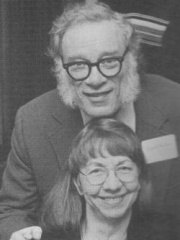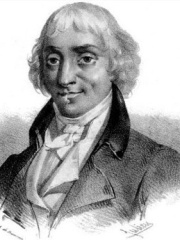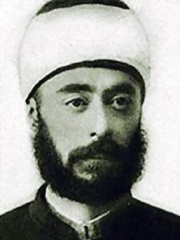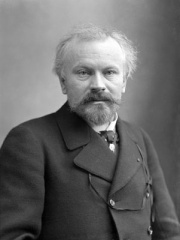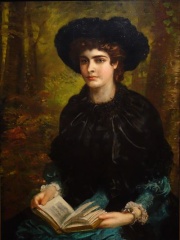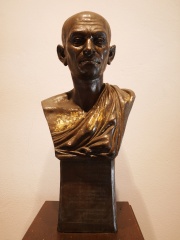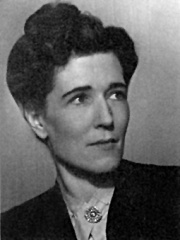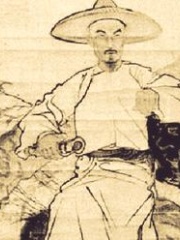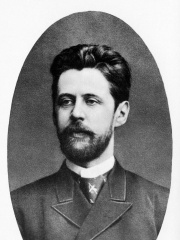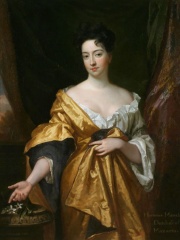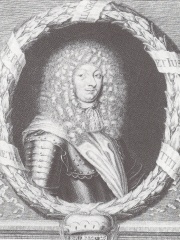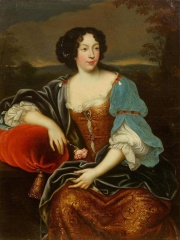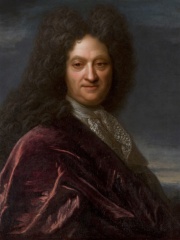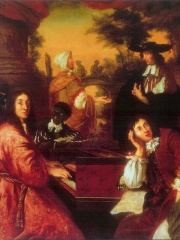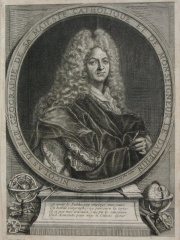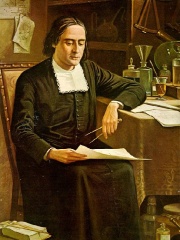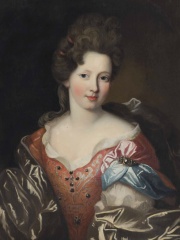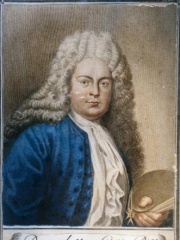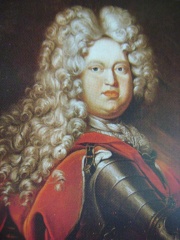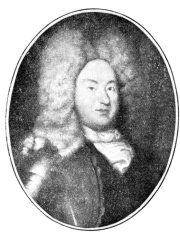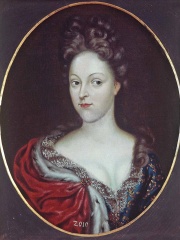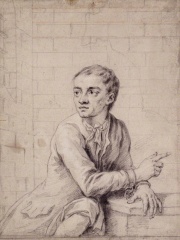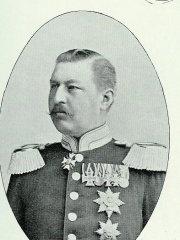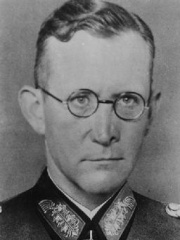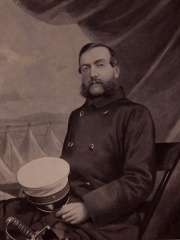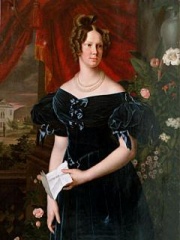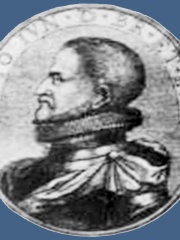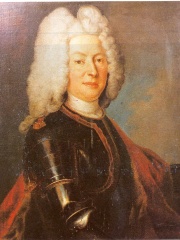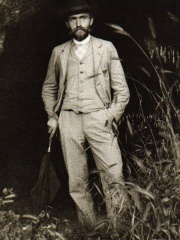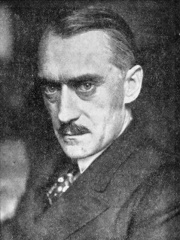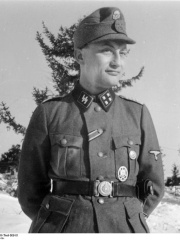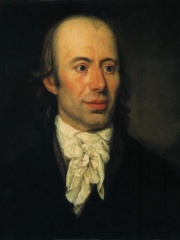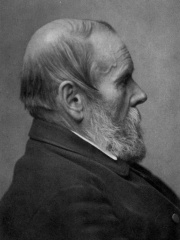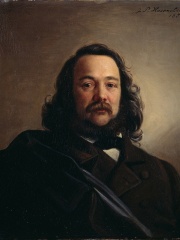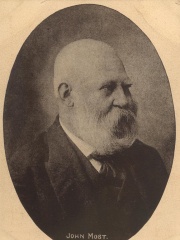WRITER
Glückel of Hameln
1646 - 1724
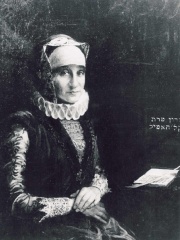
 Glückel of Hameln
Glückel of Hameln
Glückel of Hameln (Yiddish: גליקל בת ר' יהודה לייב האַמיל; also spelled Glückel, Glüeckel, or Glikl of Hamelin; also known as Glikl bas Judah Leib) (c. 1646 – September 19, 1724) was a German Jewish businesswoman and diarist. Written in her native tongue of Western Yiddish over the course of thirty years, her memoirs were originally intended to be an ethical will for her children and future descendants. Glückel's diaries are the only known pre-modern Yiddish memoirs written by a woman. Read more on Wikipedia
Since 2007, the English Wikipedia page of Glückel of Hameln has received more than 110,890 page views. Her biography is available in 18 different languages on Wikipedia (up from 16 in 2019). Glückel of Hameln is the 3,724th most popular writer (down from 3,290th in 2019), the 3,768th most popular biography from Germany (down from 3,267th in 2019) and the 224th most popular German Writer.
Memorability Metrics
110k
Page Views (PV)
51.01
Historical Popularity Index (HPI)
18
Languages Editions (L)
4.24
Effective Languages (L*)
2.23
Coefficient of Variation (CV)
Notable Works
Page views of Glückel of Hamelns by language
Over the past year Glückel of Hameln has had the most page views in the English wikipedia edition with 13,402 views, followed by German (6,343), and Hebrew (3,233). In terms of yearly growth of page views the top 3 wikpedia editions are Basque (84.90%), Catalan (62.70%), and Egyptian Arabic (57.24%)
Among WRITERS
Among writers, Glückel of Hameln ranks 3,724 out of 7,302. Before her are Janet Asimov, Évariste de Parny, Eva Mozes Kor, Bhalchandra Nemade, Abd al-Rahman al-Kawakibi, and Jules Lemaître. After her are Constance Lloyd, Sunthorn Phu, Georgette Heyer, Wu Jingzi, Bruno Apitz, and Innokenty Annensky.
Most Popular Writers in Wikipedia
Go to all RankingsJanet Asimov
1926 - 2019
HPI: 51.03
Rank: 3,718
Évariste de Parny
1753 - 1814
HPI: 51.03
Rank: 3,719
Eva Mozes Kor
1934 - 2019
HPI: 51.03
Rank: 3,720
Bhalchandra Nemade
1938 - Present
HPI: 51.03
Rank: 3,721
Abd al-Rahman al-Kawakibi
1855 - 1902
HPI: 51.02
Rank: 3,722
Jules Lemaître
1853 - 1914
HPI: 51.01
Rank: 3,723
Glückel of Hameln
1646 - 1724
HPI: 51.01
Rank: 3,724
Constance Lloyd
1858 - 1898
HPI: 51.01
Rank: 3,725
Sunthorn Phu
1786 - 1855
HPI: 51.00
Rank: 3,726
Georgette Heyer
1902 - 1974
HPI: 51.00
Rank: 3,727
Wu Jingzi
1701 - 1754
HPI: 50.99
Rank: 3,728
Bruno Apitz
1900 - 1979
HPI: 50.99
Rank: 3,729
Innokenty Annensky
1855 - 1909
HPI: 50.99
Rank: 3,730
Contemporaries
Among people born in 1646, Glückel of Hameln ranks 17. Before her are Hortense Mancini, Alexandre Exquemelin, Charles Plumier, Frederick I, Duke of Saxe-Gotha-Altenburg, Élisabeth Marguerite d'Orléans, and Pierre Le Pesant, sieur de Boisguilbert. After her are Johann Theile, Nicolas de Fer, Paul Hermann, and Jean Hardouin. Among people deceased in 1724, Glückel of Hameln ranks 11. Before her are Johann Homann, Edward Low, Bartolomeu de Gusmão, Marie of Lorraine, Benedetto Luti, and Ernst Ludwig I, Duke of Saxe-Meiningen. After her are Ernest Frederick I, Duke of Saxe-Hildburghausen, Johann Theile, Princess Eleonore Juliane of Brandenburg-Ansbach, and Jack Sheppard.
Others Born in 1646
Go to all RankingsHortense Mancini
POLITICIAN
1646 - 1699
HPI: 57.05
Rank: 11
Alexandre Exquemelin
WRITER
1646 - 1707
HPI: 55.50
Rank: 12
Charles Plumier
BIOLOGIST
1646 - 1704
HPI: 55.16
Rank: 13
Frederick I, Duke of Saxe-Gotha-Altenburg
POLITICIAN
1646 - 1691
HPI: 53.23
Rank: 14
Élisabeth Marguerite d'Orléans
POLITICIAN
1646 - 1696
HPI: 51.78
Rank: 15
Pierre Le Pesant, sieur de Boisguilbert
ECONOMIST
1646 - 1714
HPI: 51.32
Rank: 16
Glückel of Hameln
WRITER
1646 - 1724
HPI: 51.01
Rank: 17
Johann Theile
COMPOSER
1646 - 1724
HPI: 50.57
Rank: 18
Nicolas de Fer
GEOGRAPHER
1646 - 1720
HPI: 49.84
Rank: 19
Paul Hermann
PHYSICIAN
1646 - 1695
HPI: 48.23
Rank: 20
Jean Hardouin
RELIGIOUS FIGURE
1646 - 1729
HPI: 46.64
Rank: 21
Others Deceased in 1724
Go to all RankingsJohann Homann
POLITICIAN
1664 - 1724
HPI: 56.40
Rank: 5
Edward Low
PIRATE
1690 - 1724
HPI: 55.07
Rank: 6
Bartolomeu de Gusmão
INVENTOR
1685 - 1724
HPI: 54.89
Rank: 7
Marie of Lorraine
NOBLEMAN
1674 - 1724
HPI: 54.20
Rank: 8
Benedetto Luti
PAINTER
1666 - 1724
HPI: 52.52
Rank: 9
Ernst Ludwig I, Duke of Saxe-Meiningen
POLITICIAN
1672 - 1724
HPI: 52.50
Rank: 10
Glückel of Hameln
WRITER
1646 - 1724
HPI: 51.01
Rank: 11
Ernest Frederick I, Duke of Saxe-Hildburghausen
POLITICIAN
1681 - 1724
HPI: 50.58
Rank: 12
Johann Theile
COMPOSER
1646 - 1724
HPI: 50.57
Rank: 13
Princess Eleonore Juliane of Brandenburg-Ansbach
NOBLEMAN
1663 - 1724
HPI: 50.16
Rank: 14
Jack Sheppard
SOCIAL ACTIVIST
1702 - 1724
HPI: 48.69
Rank: 15
In Germany
Among people born in Germany, Glückel of Hameln ranks 3,768 out of 7,253. Before her are Günther Victor, Prince of Schwarzburg (1852), Peter Thiel (1967), Erich Marcks (1891), Norbert Lammert (1948), Alexander, Prince of Lippe (1831), and Princess Marie Frederica of Hesse-Kassel (1804). After her are Wolf Hoffmann (1959), Otto I, Duke of Brunswick-Harburg (1495), Bruno Apitz (1900), Christian, Duke of Saxe-Eisenberg (1653), Karl Blossfeldt (1865), and Bernd Förster (1956).
Others born in Germany
Go to all RankingsGünther Victor, Prince of Schwarzburg
NOBLEMAN
1852 - 1925
HPI: 51.04
Rank: 3,762
Peter Thiel
BUSINESSPERSON
1967 - Present
HPI: 51.03
Rank: 3,763
Erich Marcks
MILITARY PERSONNEL
1891 - 1944
HPI: 51.02
Rank: 3,764
Norbert Lammert
POLITICIAN
1948 - Present
HPI: 51.02
Rank: 3,765
Alexander, Prince of Lippe
POLITICIAN
1831 - 1905
HPI: 51.01
Rank: 3,766
Princess Marie Frederica of Hesse-Kassel
POLITICIAN
1804 - 1888
HPI: 51.01
Rank: 3,767
Glückel of Hameln
WRITER
1646 - 1724
HPI: 51.01
Rank: 3,768
Wolf Hoffmann
MUSICIAN
1959 - Present
HPI: 51.01
Rank: 3,769
Otto I, Duke of Brunswick-Harburg
NOBLEMAN
1495 - 1549
HPI: 50.99
Rank: 3,770
Bruno Apitz
WRITER
1900 - 1979
HPI: 50.99
Rank: 3,771
Christian, Duke of Saxe-Eisenberg
POLITICIAN
1653 - 1707
HPI: 50.99
Rank: 3,772
Karl Blossfeldt
PHOTOGRAPHER
1865 - 1932
HPI: 50.99
Rank: 3,773
Bernd Förster
SOCCER PLAYER
1956 - Present
HPI: 50.98
Rank: 3,774
Among WRITERS In Germany
Among writers born in Germany, Glückel of Hameln ranks 224. Before her are Leonhard Frank (1882), Gunter d'Alquen (1910), Günter Eich (1907), Johann Heinrich Voss (1751), Sylvia Nasar (1947), and Robert Jungk (1913). After her are Bruno Apitz (1900), Friedrich Theodor Vischer (1807), Ferdinand Freiligrath (1810), Walter Kempowski (1929), Irmgard Keun (1905), and Johann Most (1846).
Leonhard Frank
1882 - 1961
HPI: 51.34
Rank: 218
Gunter d'Alquen
1910 - 1998
HPI: 51.34
Rank: 219
Günter Eich
1907 - 1972
HPI: 51.28
Rank: 220
Johann Heinrich Voss
1751 - 1826
HPI: 51.23
Rank: 221
Sylvia Nasar
1947 - Present
HPI: 51.17
Rank: 222
Robert Jungk
1913 - 1994
HPI: 51.14
Rank: 223
Glückel of Hameln
1646 - 1724
HPI: 51.01
Rank: 224
Bruno Apitz
1900 - 1979
HPI: 50.99
Rank: 225
Friedrich Theodor Vischer
1807 - 1887
HPI: 50.92
Rank: 226
Ferdinand Freiligrath
1810 - 1876
HPI: 50.89
Rank: 227
Walter Kempowski
1929 - 2007
HPI: 50.85
Rank: 228
Irmgard Keun
1905 - 1982
HPI: 50.76
Rank: 229
Johann Most
1846 - 1906
HPI: 50.73
Rank: 230
